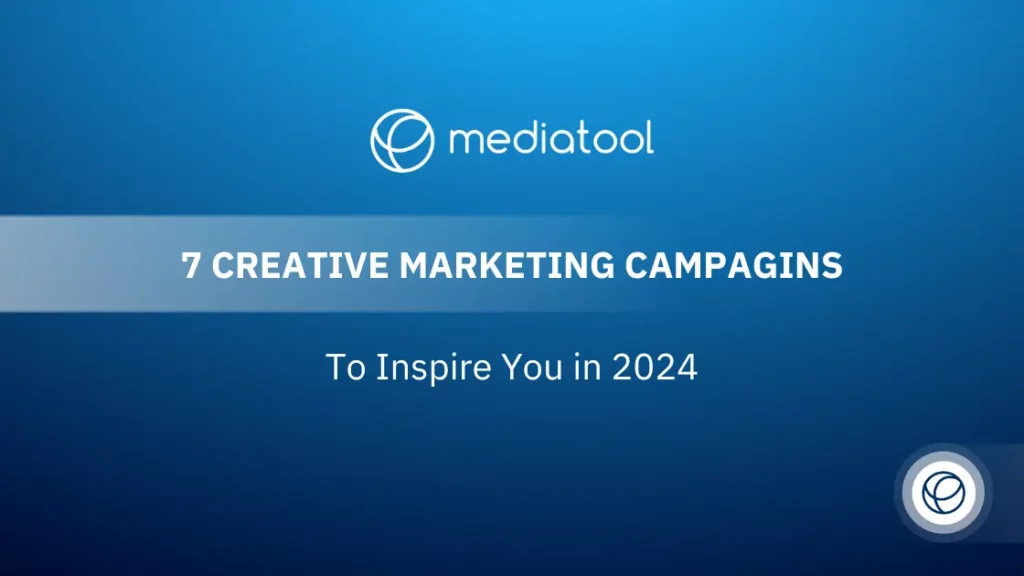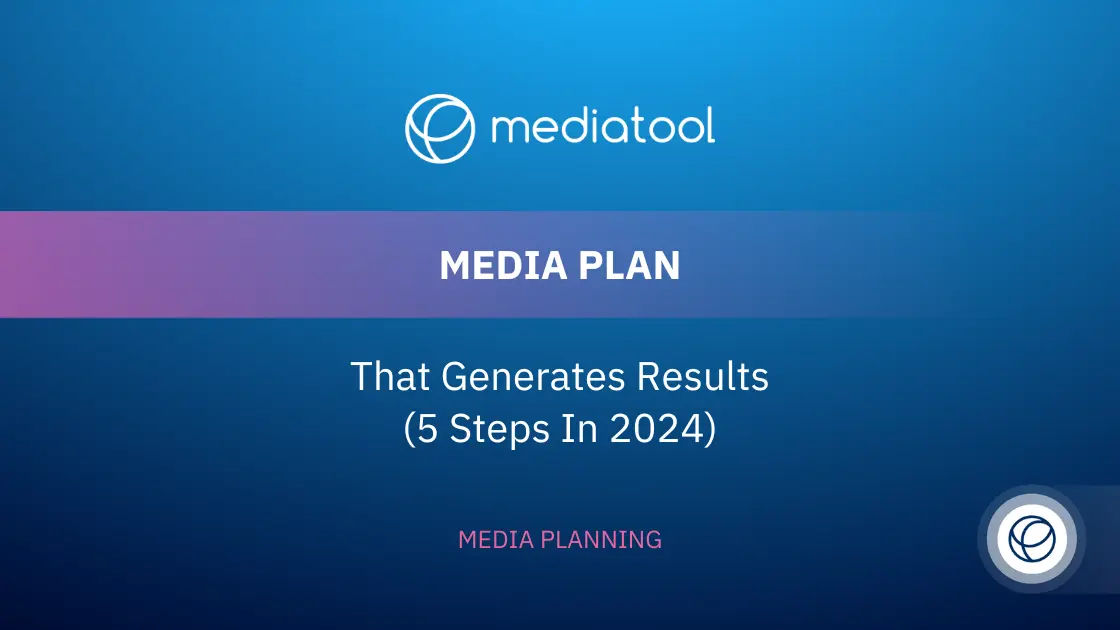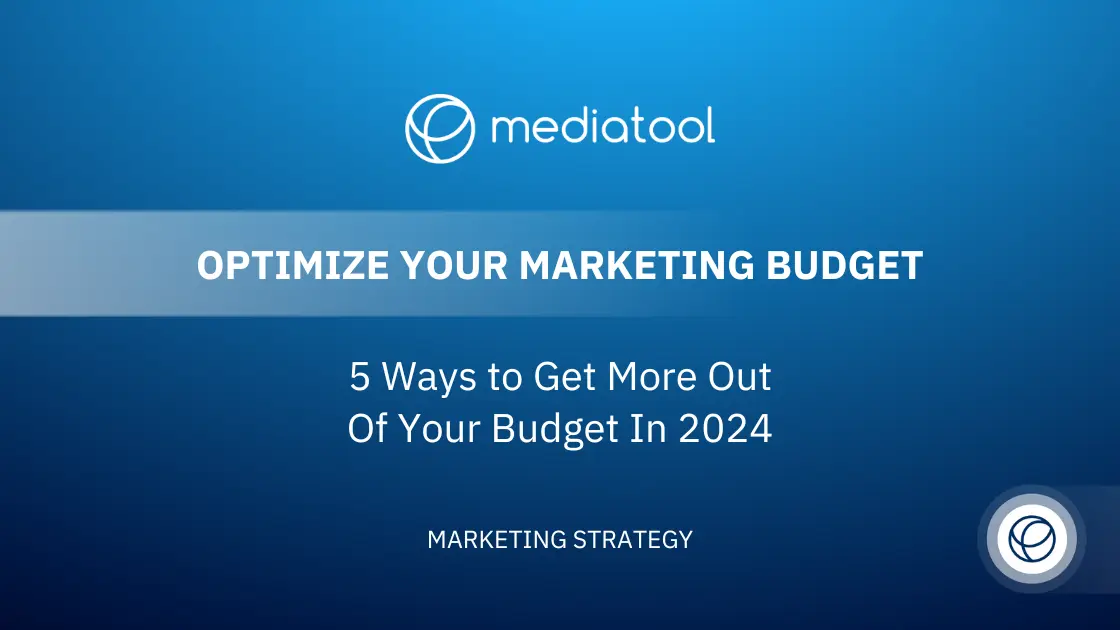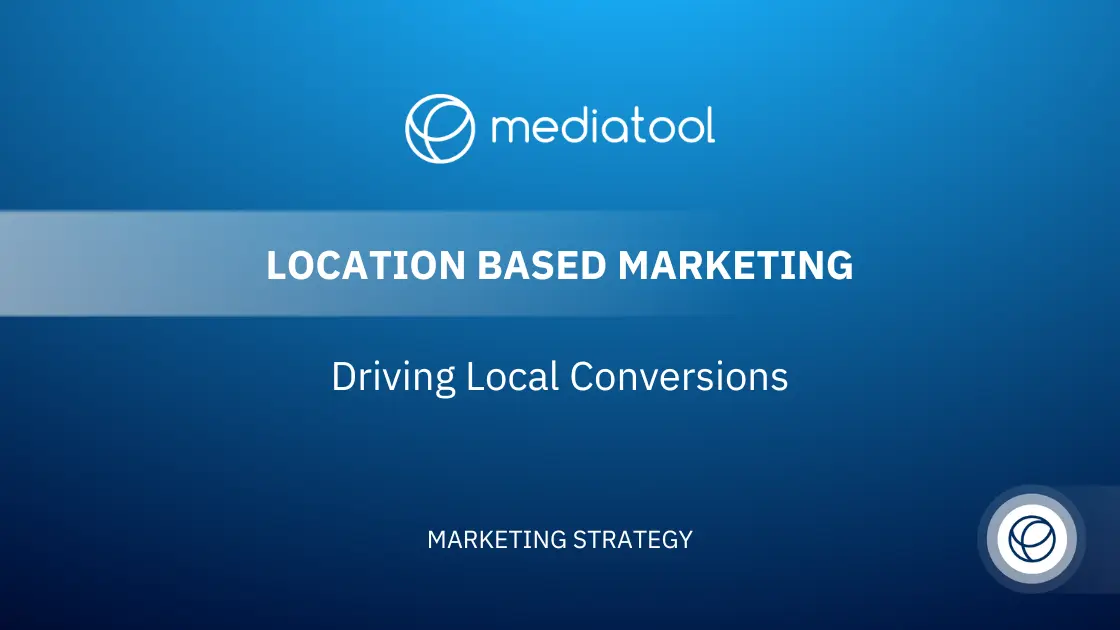Our pick of the seven best creative marketing campaigns we’ve seen on the internet recently, to get you inspired.
The marketing landscape is constantly evolving, driven by changes in privacy laws, data usage, consumer behaviors, and technological advancements. Brands that adapt by launching creative and effective marketing campaigns often set trends and reap significant rewards.
Here’s a deep dive into some of the best marketing campaigns that have made waves online for their innovation, human-centric approach, and sensitivity to consumer privacy.
Innovative Campaign Strategies
Brands have been pushing the boundaries of creativity to enhance brand visibility and connect with their target audiences more effectively. Successful ad campaigns are not only eye-catching but also build brand recognition and foster a deep emotional connection with the audience.
Key Element of Success: A successful marketing campaign hinges on a blend of creativity, strategic planning, and precise execution. Companies that master this blend tend to see their campaigns go viral or become highly effective in driving sales.
Human-Centered and Non-Invasive Advertising
In a digital age where privacy concerns are paramount, brands that respect user privacy while still engaging in meaningful ways stand out. Great marketing campaigns typically involve user-generated content, cutting-edge technology, and creative approaches that respect the consumer’s space and preferences. Notably, 91% of shoppers won’t make purchases from brands that serve ads they perceive to be intrusive.
Why This Works: By focusing on human-centered design and non-invasive strategies, these campaigns create a positive brand reputation and encourage deeper customer loyalty without alienating users with overly aggressive marketing tactics.
Examples of Successful Marketing Campaigns
- Targeted Social Media Campaigns: Leveraging data-driven insights, brands have launched personalized ad campaigns on social media platforms, significantly increasing user engagement and the campaign’s success. Businesses that use data-driven strategies achieve five to eight times higher ROI compared to those that don’t.
- Interactive Content Marketing: Brands employing interactive content marketing techniques, such as quizzes, polls, and engaging videos, have effectively captured the attention of their target market. This strategy not only enhances user experience but also boosts content marketing success. The percentage of businesses using interactive content nearly doubled from 2023 to 2024,increasing from 36.1% to 62.3%.
- Email Marketing Integration: By integrating email marketing with other digital channels, companies have managed to maintain ongoing conversations with their customers, boosting customer satisfaction and brand loyalty.
Learning from the Best: Each successful ad campaign offers valuable lessons in marketing strategy, customer engagement, and brand development. Marketing teams should analyze these campaigns to understand what makes them resonate so well with their audiences.
Key Takeaways for Your Next Campaign
- Understand Your Audience: Conducting market research to understand consumer behavior and preferences is crucial. Tailor your messages to meet the needs and desires of your specific target audience.
- Leverage the Right Channels: Choosing the right online platforms and marketing channels is essential. Whether it’s social media, TV commercials, print ads, or digital marketing, knowing where your audience is most active will help you make a lasting impression.
- Encourage Participation: Campaigns that encourage user-generated content can significantly increase engagement and create a sense of community around a brand. Approximately 85% of consumers find user-generated content more influential than brand-created photos or videos.
By studying these successful marketing campaign examples and integrating their best elements, marketers can develop strategies that not only capture the target market’s attention but also drive meaningful engagement and sales. This approach results in powerful marketing campaigns that leave a lasting impact and help a company launch a winning campaign that boosts its own brand and overall campaign’s success.
So what companies have caught our eye with their campaigns lately? Who is striking the balance between campaigns that are innovative and eye-catching, as well as human-centered and non-invasive?
Here’s our top pick of some of the best marketing campaign examples we’ve spotted recently, why we love them, and key takeaways to get you started.
1. Heinz’s “Ketchup Fraud” Campaign
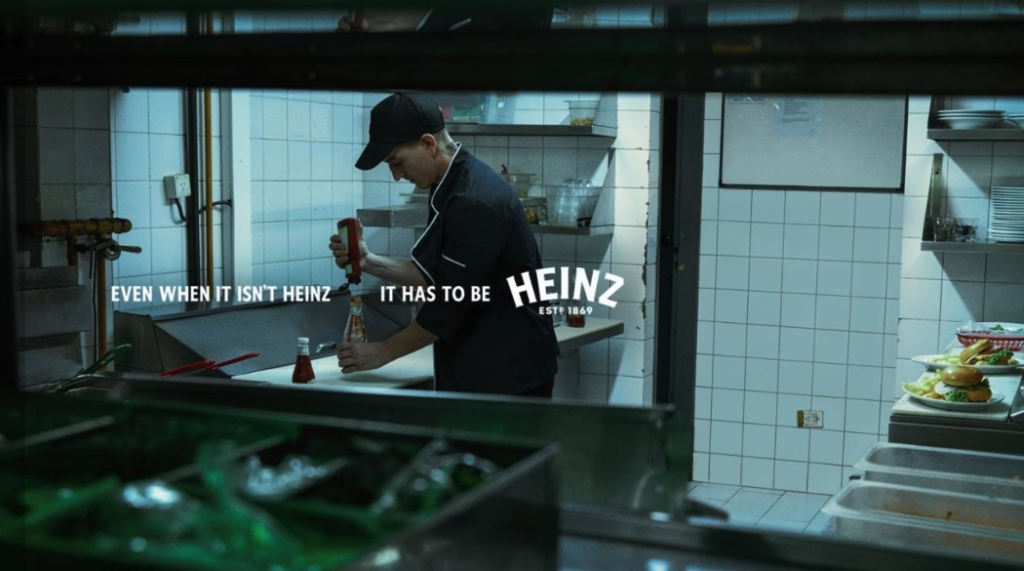
In 2023, Heinz launched the “Ketchup Fraud” campaign to address the issue of restaurants refilling Heinz bottles with generic ketchup. This practice, often referred to as “ketchup fraud,” undermines the brand’s reputation and deceives loyal customers expecting the authentic Heinz taste.
The Problem: Heinz discovered that some restaurants were refilling Heinz bottles with cheaper, generic ketchup to save money. This deceptive practice led to customer dissatisfaction and hurt Heinz’s brand reputation.
The Solution: Heinz, in collaboration with Wunderman Thompson, launched a multifaceted campaign to combat this issue. The campaign included:
- Pantone-Matched Labels: Heinz introduced a unique control label featuring a Pantone-matched stripe that is the exact shade of Heinz ketchup. This allowed customers to easily identify whether the ketchup in the bottle matched the genuine product.
- Social Media Engagement: Heinz encouraged customers to report instances of ketchup fraud by using the hashtag #KetchupFraud on social media. This user-generated content helped to spread awareness and gather evidence of the deceptive practice.
- Caught-in-the-Act Style Assets: The campaign featured visuals and videos that mimicked social media posts, showing restaurant staff refilling Heinz bottles with generic ketchup. These caught-in-the-act style assets were designed to be both humorous and eye-opening, engaging audiences while highlighting the issue.
- Integrated Media Campaign: Heinz rolled out the campaign across various media platforms, including large-scale out-of-home (OOH) placements in major cities like New York and Chicago, print ads in premium magazines, newspaper inserts, and extensive social media coverage. The campaign’s broad reach ensured that the message was seen by a wide audience.
We love it because: The “Ketchup Fraud” campaign cleverly used humor and transparency to address a significant issue affecting Heinz’s brand reputation. By involving customers in the campaign through social media and offering a clear visual tool to identify authentic Heinz ketchup, the brand effectively engaged with its audience and reinforced its commitment to quality.
Key Takeaway: Transparency and customer involvement are powerful tools in combating brand deception and maintaining trust. By creating a campaign that directly addressed the issue and involved customers in the solution, Heinz not only protected its brand reputation but also strengthened its relationship with loyal customers.
2. Tinder’s “It Starts with a Swipe”
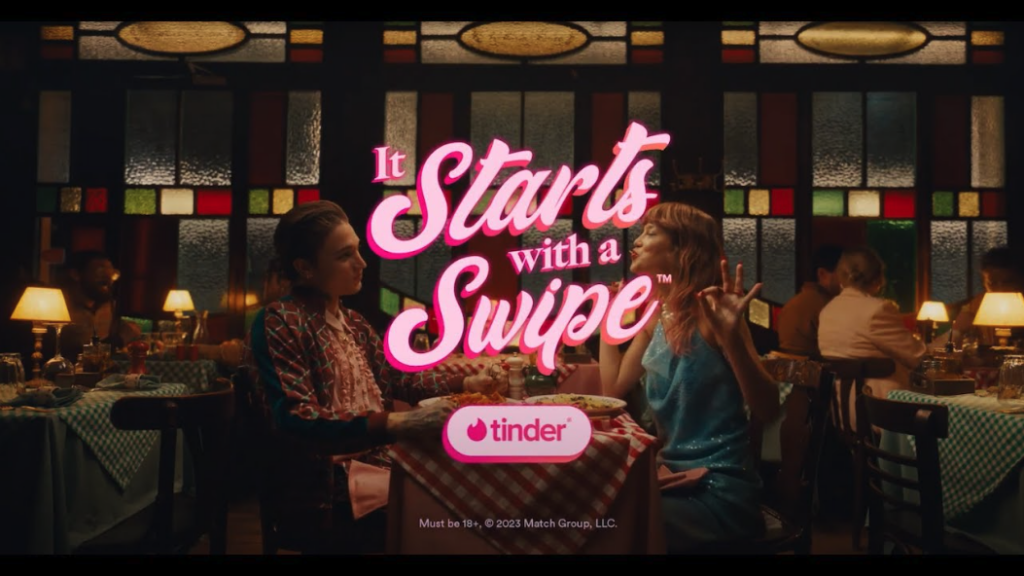
Tinder’s global campaign, “It Starts with a Swipe,” aimed to reposition the app as a place for Gen Z to make meaningful connections rather than just short-term hookups. The campaign featured quirky and humorous videos showcasing various successful matches and relationships that started with a swipe. It included interactive billboards, social media challenges, and influencer collaborations to create a fun and engaging narrative.
We love it because: Tinder’s use of humor and relatable stories made the campaign stand out. The interactive billboards and social media challenges encouraged user engagement and helped to shift the app’s brand identity towards fostering meaningful connections.
Key takeaway: What made this marketing campaign successful? Humor and relatability can be powerful tools in marketing. Use them to create content that resonates with your target audience and encourages them to engage with your brand. This campaign is a prime example of a successful marketing campaign that enhances brand visibility.
3. Doritos’ “Triangle Tracker” Campaign
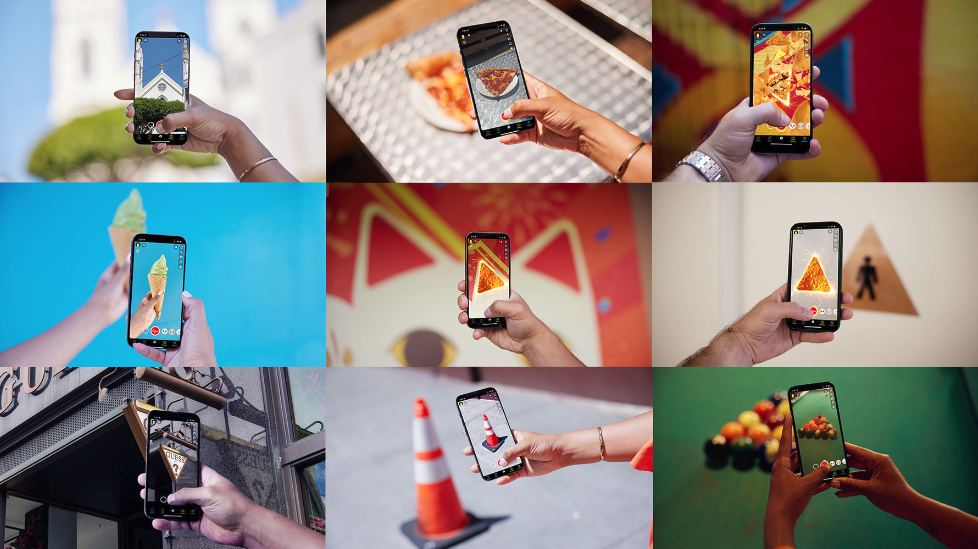
Doritos launched the “Triangle Tracker” campaign, encouraging fans to spot and share images of triangle-shaped objects in their daily lives on social media. Using a dedicated hashtag, participants could submit their entries for a chance to win prizes, including limited-edition Doritos merchandise and concert tickets. The campaign played on the iconic shape of Doritos chips and created a fun, community-driven challenge.
We love it because: This effective marketing campaign cleverly used user-generated content to drive engagement. By turning the simple triangle shape into a fun and interactive challenge, Doritos created a campaign that was easy to participate in and share.
Key takeaway: Encourage user-generated content to create a sense of community and increase brand engagement. Simple campaigns that leverage everyday objects or experiences can be incredibly effective. This campaign is an excellent example of leveraging user-generated content for a successful ad campaign.
4. LEGO’s Botanicals Challenge
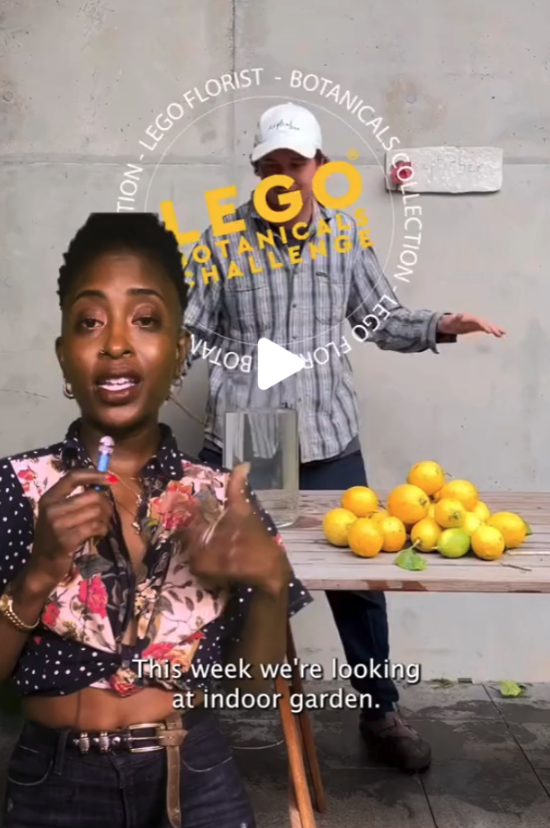
LEGO capitalized on their adult audience with a creative social media campaign to promote their Botanicals Collection. The campaign included a weekly TikTok challenge where florist creators built displays using LEGO Botanicals sets, and a Valentine’s Day-themed Instagram campaign featuring beautiful displays. The offline component, “Le Florist,” transformed a LEGO store into a florist shop with LEGO flowers and bouquets.

We love it because: LEGO’s campaign was both creative and visually appealing. The integration of online challenges with an offline experience created a comprehensive and engaging marketing strategy.
Key takeaway: Combining online and offline marketing efforts can create a more holistic and engaging campaign. Use creative themes and challenges to connect with your audience on multiple levels. This is a great example of a successful marketing campaign that combines digital and physical elements.
5. McDonald’s “WcDonald’s” Campaign
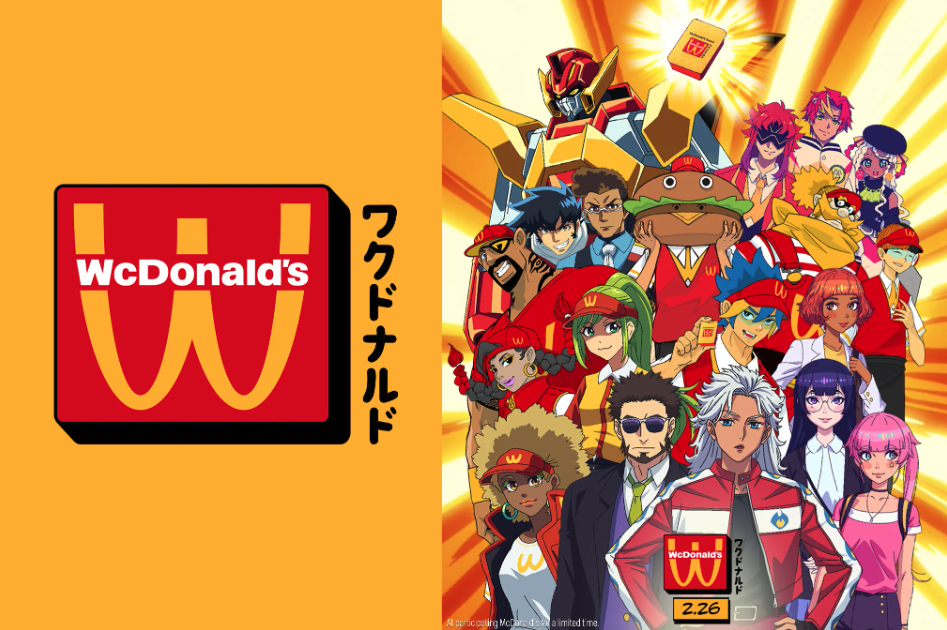
McDonald’s embraced the fun and quirkiness of its brand by flipping its iconic golden arches to form a “W” and temporarily rebranding as “WcDonald’s.” This playful campaign, inspired by its portrayal in manga and video games, featured manga-inspired art and custom short animations on social media, creating a fresh and engaging experience for fans.
We love it because: McDonald’s clever use of pop culture references and playful branding made this campaign stand out. The rebranding and manga-inspired content were both fun and engaging, resonating well with their target audience.
Key takeaway: Leveraging pop culture and playful branding can make your campaigns more relatable and engaging. Think about how you can incorporate elements of popular culture into your marketing strategy to connect with your audience. This is a great example of a campaign that uses creative approaches to enhance brand visibility.
6. Uber Eats’ “Get Almost, Almost Anything” Campaign
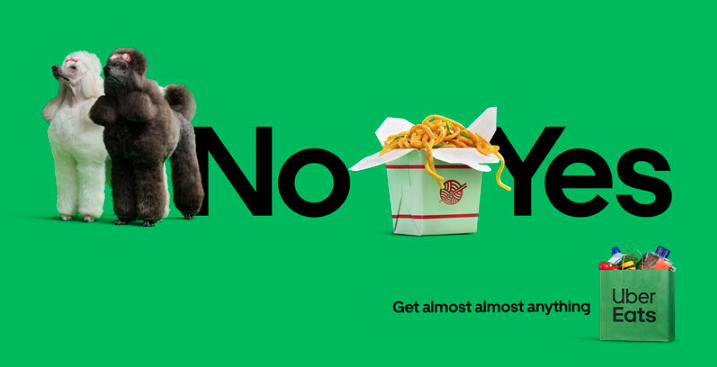
Uber Eats launched the “Get Almost, Almost Anything” campaign, highlighting the wide variety of items available for delivery beyond just food. The campaign featured humorous TV commercials, digital ads, and social media content, showing users that they can order everything from groceries to household essentials, but with a playful twist — acknowledging that while they offer a vast selection, they don’t have everything.
We love it because: The campaign’s humor and creativity made it stand out. By playfully admitting that they can’t deliver everything, Uber Eats connected with their audience on a more relatable level. The commercials featured celebrities in funny scenarios, emphasizing the wide range of items available, while also poking fun at the few things they can’t deliver, like a time machine or an ant farm.
Key takeaway: Humor and transparency can be effective tools in marketing. 90% of consumers are more likely to remember a funny ad, and 72% prefer a humorous brand over its competitors. By acknowledging limitations in a playful way, you can build trust and relatability with your audience. Consider how you can use humor to highlight your strengths and connect with your customers. This campaign is a great example of a successful marketing campaign that uses humor to enhance brand recognition.
7. Snoop Dogg and Solo Stove’s “Smokesman” Campaign
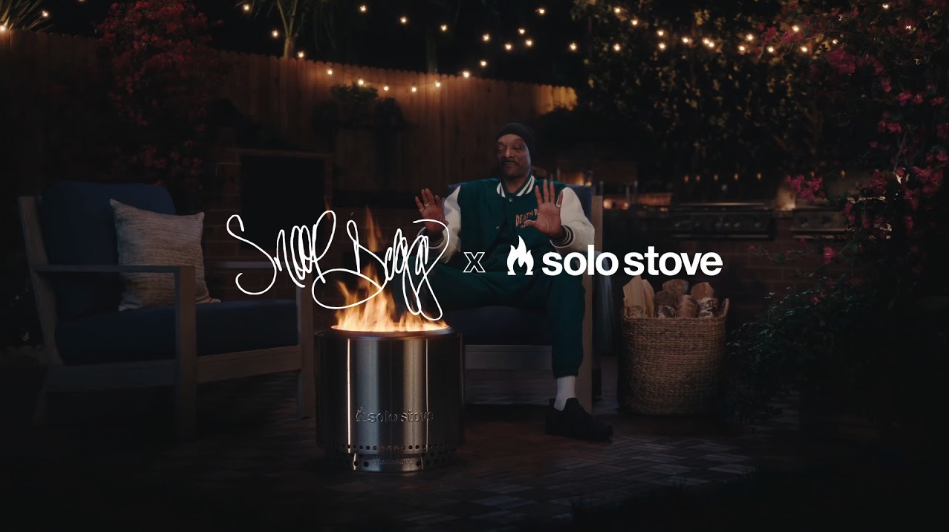
In a clever twist, Snoop Dogg announced on social media that he was giving up smoking, sparking widespread speculation. A few days later, it was revealed that Snoop was partnering with Solo Stove as their “smokesman,” promoting their smokeless fire pits.
The Campaign
Initial Teaser: Snoop’s cryptic announcement created a buzz, leveraging his well-known persona to draw attention.
Humorous Reveal: The follow-up ads showcased Snoop enjoying Solo Stove’s smokeless fire pits, with the tagline “No smoke, just fire.” This playful approach highlighted the product’s benefits in an entertaining way.
Multi-Platform Strategy: The campaign used social media, video ads, and influencer marketing to maximize reach and engagement.
Impact
The “Smokesman” campaign successfully combined humor and strategic celebrity endorsement, resulting in significant media coverage and social media engagement. It demonstrated how a playful narrative and a well-known persona could make a marketing campaign both memorable and effective.
Key Takeaways
1. Leverage Celebrity Personas: Utilize well-known figures to enhance brand visibility.
2. Use Humor: Create engaging and memorable content through playful narratives.
3. Strategic Teasing: Build anticipation and curiosity with initial cryptic announcements.
4. Multi-Platform Approach: Maximize reach by using various marketing channels.
The “Smokesman” campaign is a prime example of how humor, celebrity endorsements, and clever marketing can create a successful and engaging marketing campaign.
Think outside the box to launch your best creative marketing campaign yet
A powerful marketing campaign uses emotion and relatability to create a human connection with the audience. Campaigns don’t have to be crazy complicated in order to be creative. Whether you’re stuck in a creative rut or looking for inspiration for your next campaign, we hope these examples and tips help you forge genuine interactions with your audience.
Need help getting creative and producing your best marketing campaigns yet? Work collaboratively with your team and use your data to determine tactics, in one platform. Download our ebook where we explain how, or for more info book a tour with a member of the team.
